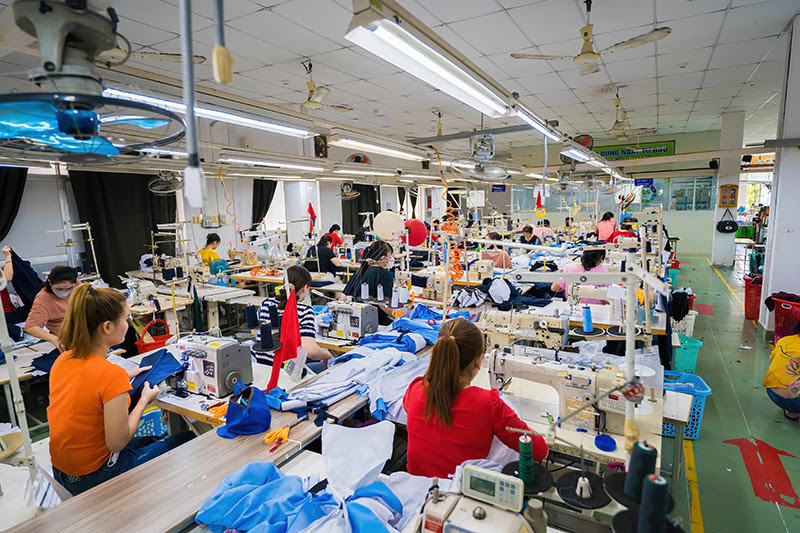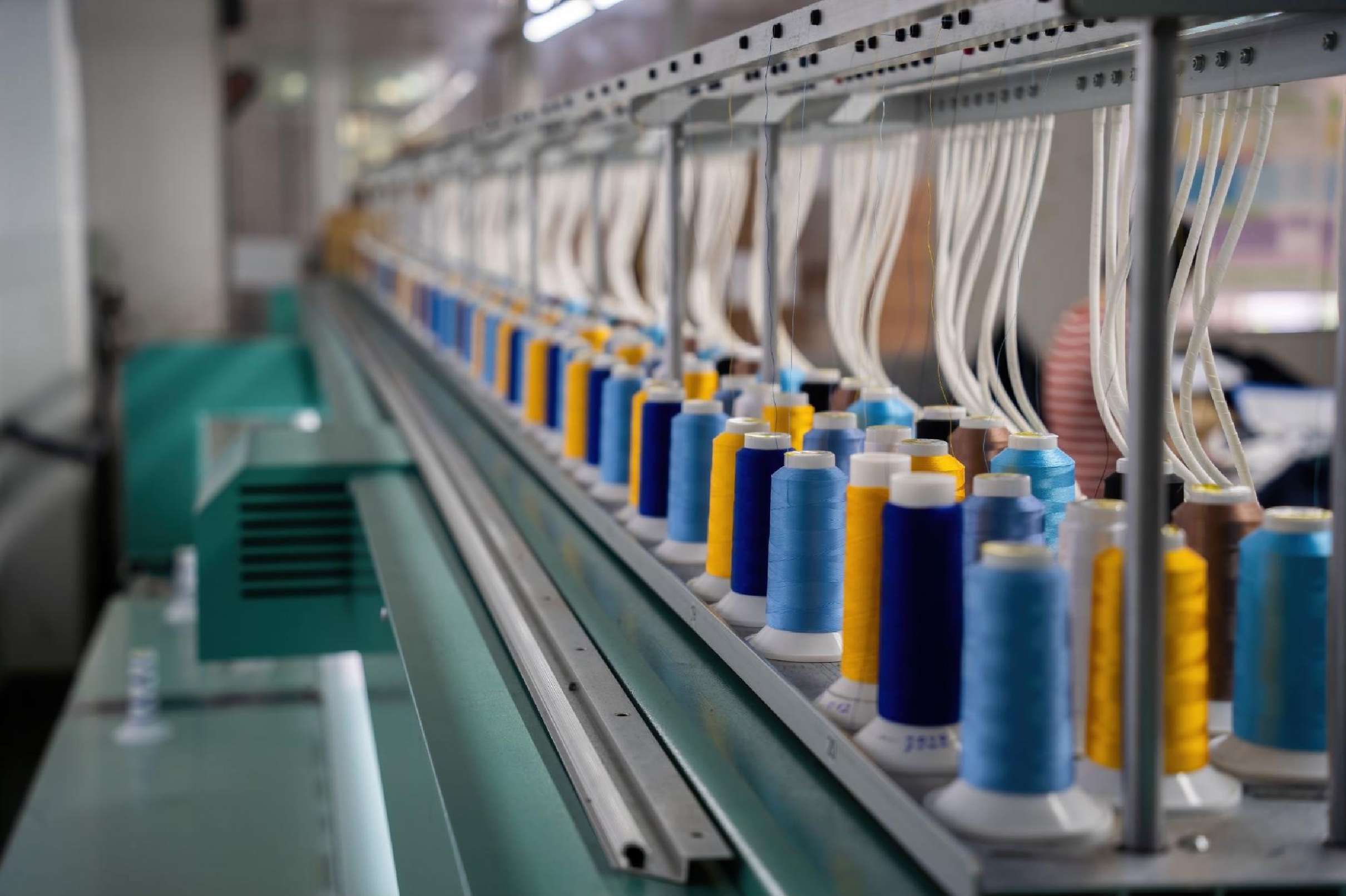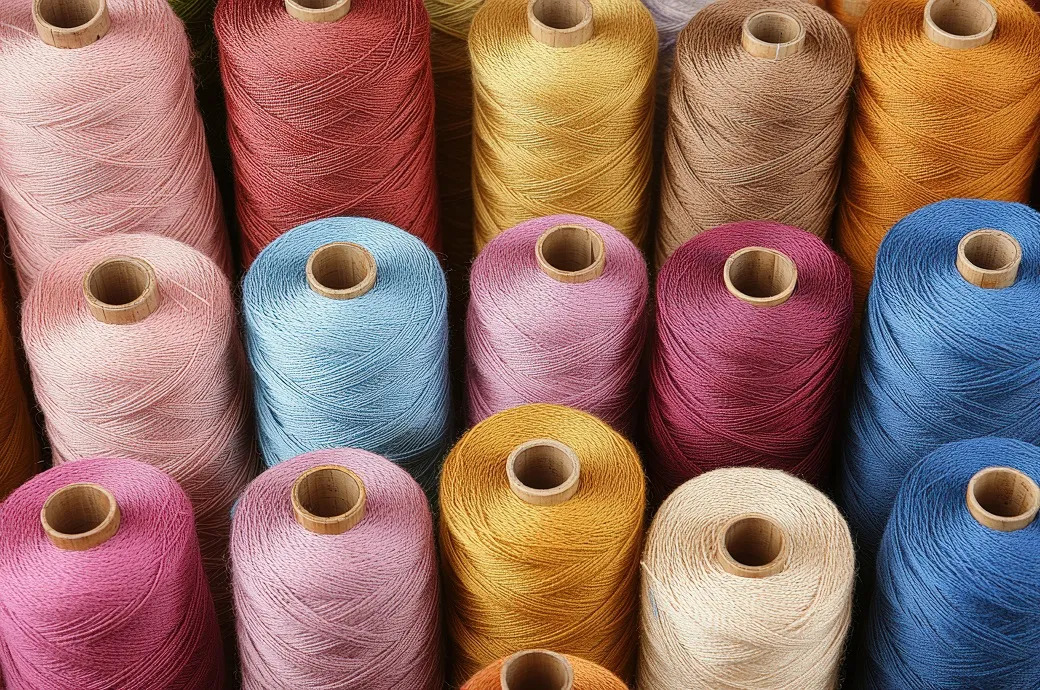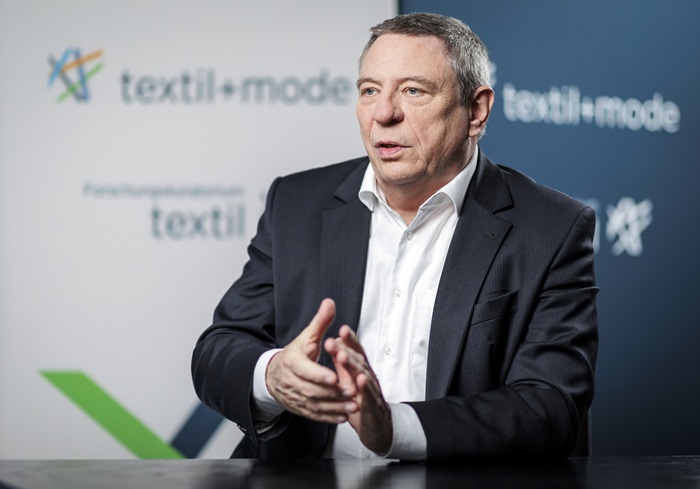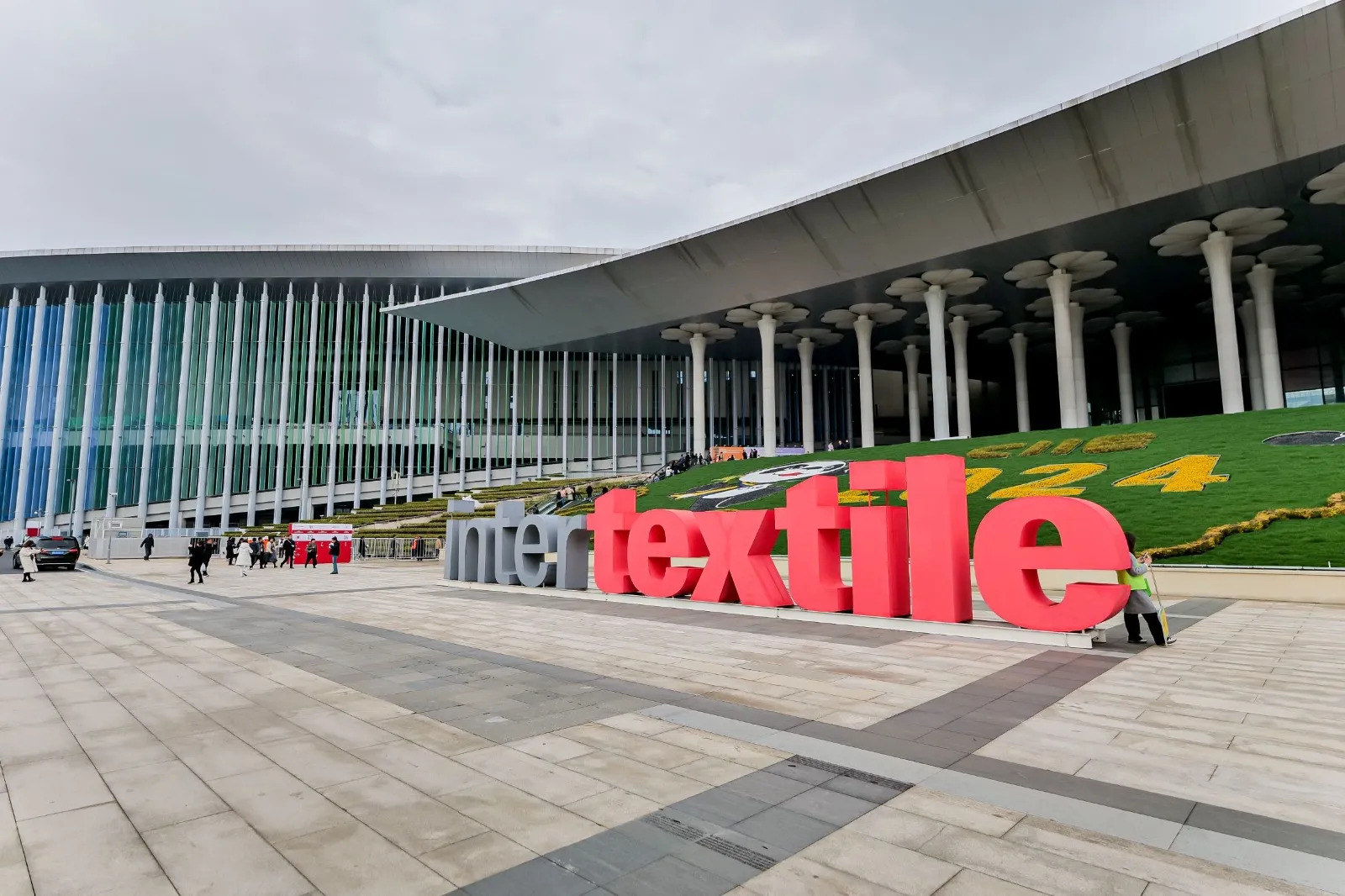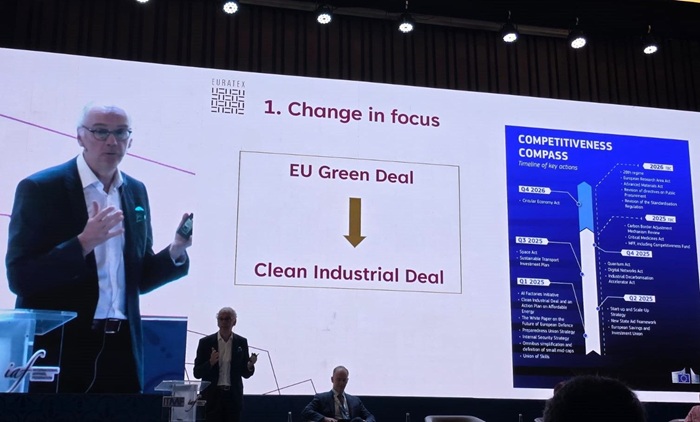FW

A groundbreaking new study by Glimpact, has pulled back the curtain on the often-obscured environmental footprint of the apparel industry, revealing a detailed assessment of the ecological costs associated with some leading fashion brands like, Patagonia, Reformation, H&M, Ralph Lauren, and Alo Yoga. Unlike previous analyses, Glimpact looks deep into the entire lifecycle of garments – from raw material extraction and processing to manufacturing, transportation, consumer use, and eventual disposal – offering a comprehensive picture of the industry's impact.
Beyond greenwashing and vague claims
The primary objective of the study is to move beyond generalized sustainability claims and provide, quantifiable data on the specific environmental burdens created by individual apparel brands. In an era saturated with "eco-friendly" marketing and vague commitments, Glimpact aims to inject transparency and accountability into the fashion landscape.
"For too long, consumers and even industry stakeholders have relied on incomplete or high-level assessments of environmental impact," explains Anya Sharma, lead researcher for Glimpact. "Our goal was to dissect the supply chains of major brands, identify the most significant ecological hotspots, and provide a clear, data-driven understanding of the true cost of our clothes."
The relevance of this study is paramount in a world grappling with climate change, resource depletion, and pollution. The findings offer insights for consumers seeking to make more informed choices, policymakers aiming to regulate the industry, and brands looking to implement meaningful and impactful sustainability strategies.
A holistic and granular approach
What sets Glimpact apart from many previous studies is its holistic and granular approach. The findings challenge conventional assumptions about sustainability in fashion, revealing that carbon emissions account for just 23 per cent of a typical apparels product’s environmental footprint. This underscores the limitations of solely focusing on carbon reduction strategies.
Using the Product Environmental Footprint (PEF) method, a science-based approach adopted by the EU to standardize environmental assessments, Glimpact evaluated over 100 apparel items across a spectrum of 16 environmental impact categories. These extend beyond climate change to include critical factors such as particulate pollution, fossil resource depletion, and water use, which together constitute over 75 per cent of an apparel product’s total environmental footprint. This multi-faceted approach provides a far more nuanced understanding of ecological costs than studies solely focused on carbon.
Glimpact moves beyond broad industry averages and focuses on specific product categories and even individual garments from leading brands. This level of granularity allows for direct comparisons and highlights the varying ecological costs associated with different materials, production methods, and supply chain complexities.
The varied impacts across brands
The study analyzed a diverse portfolio of apparel from ten prominent global brands, including Patagonia, Reformation, H&M, Ralph Lauren, and Alo Yoga, across different price points and styles. Some findings and illustrative case studies involving these specific brands have emerged.
Reformation's organic cotton paradox: The study revealed that Reformation’s Tessa Hoodie, made from 100 per cent organic cotton, had the highest environmental impact among the women’s sweatshirts tested. This impact surpassed that of Alo Yoga’s Accolade Hoodie (which makes no explicit sustainability claims) and Patagonia’s Fitz Roy Icon Uprisal Hoody, which is made from a significant amount of recycled materials but not entirely (consisting of 55 per cent recycled polyester and 45 per cent recycled cotton).
Glimpact’s analysis suggests that even with seemingly sustainable materials like organic cotton, other lifecycle stages, such as energy-intensive processing, water usage in manufacturing, and the specific chemicals employed, can significantly inflate the overall footprint. The study indicated that simply changing the source of cotton used in Reformation’s hoodie or optimizing its manufacturing processes could potentially reduce its footprint by up to 40 per cent.
The misplaced focus on packaging and distribution: A significant finding of the Glimpact study is that packaging and distribution, often primary focal points in Environmental, Social, and Governance (ESG) strategies and marketing campaigns, account for less than 7 per cent of the total product environmental impact on average. This suggests that while important, these areas are dwarfed by the impact of raw material production and manufacturing. “Carbon is just the tip of the iceberg,” says Christophe Girardier, CEO, Glimpact. “Brands are pouring millions into recycled packaging and carbon offsets while ignoring the fact that 90 per cent of their impact is baked in before a single product is even sewn. If we don’t start measuring what really matters – raw material origin, dyeing, and fiber choices – we’re not solving the climate crisis, we’re greenwashing it.”
Raw materials and manufacturing intervention points: Consistently across all analyzed brands and product categories, raw materials and manufacturing contribute over 90 per cent of a product’s total environmental impact. This underscores that these stages are the most effective and crucial targets for meaningful sustainability interventions by brands like Patagonia, Reformation, H&M, Ralph Lauren, and Alo Yoga.
Material choices: Simply choosing a ‘sustainable’ material does not guarantee a low environmental impact. The case of Reformation’s organic cotton hoodie exemplifies this. The study highlights variations exist within material catergory. For example, the environmental impact of polyester can differ significantly depending on whether it is virgin or recycled, the energy sources used in its production, and the efficiency of the manufacturing processes.
Path to a more sustainable future
The study findings have implications for the analyzed brands and the entire apparel ecosystem. For consumers, it provides a more informed basis for purchasing decisions, encouraging a shift towards a deeper understanding of environmental impact that goes beyond surface-level claims and considers the full lifecycle of a garment. For policymakers, the detailed data, utilizing the standardized PEF method, can inform the development of more effective regulations and incentives that target the most environmentally damaging stages of apparel production.
For apparel brands like Patagonia, Reformation, H&M, Ralph Lauren, and Alo Yoga, Glimpact offers a clear and data-driven roadmap for identifying their most significant environmental impacts. The overwhelming contribution of raw materials and manufacturing to the overall footprint necessitates a re-evaluation of sourcing practices, material choices, and production technologies. Brands need to prioritize investments in innovative, lower-impact raw materials, cleaner and more efficient manufacturing processes, and fundamentally rethink their supply chain management to achieve meaningful and lasting reductions in their ecological cost.
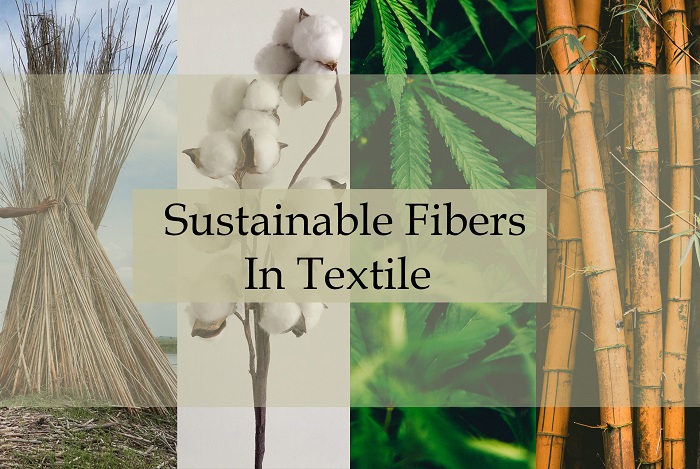
The quest for sustainable and high-performance alternatives to traditional resources has sparked a revolution in fiber use. According to the Material Innovation Initiative (MII), while alternative leathers have gained traction, the broader realm of alternative fibers remains vastly untapped, holding less than a 1 per cent market share. This underscores a significant opportunity for innovation and growth, particularly in mitigating the environmental impact of materials like silk, wool, and fur, which heavily rely on animal agriculture.
Environmental imperatives of traditional fibers
Traditional production methods for materials such as wool and silk entail extensive land use, substantial water consumption, and significant greenhouse gas emissions. Notoriously water-intensive, wool production, and the ethical concerns surrounding silk farming highlight urgent environmental and ethical considerations in these sectors.
Biotechnology, pioneering sustainable solutions
Biotechnological advancements are proving to be game-changers in material innovation. Emerging processes now allow for the biofabrication of fibers, where plant-based carbon is transformed into complex proteins using microorganisms. These engineered proteins boast customizable properties, making them suitable for diverse applications ranging from textiles to automotive components.
AMSilk, leading the charge in biofabrication
AMSilk stands at the forefront of this biotechnological frontier with their innovative biofabricated silk proteins. Conducting cradle-to-gate analyses, AMSilk has demonstrated that their biotech silk production phase contributes less than 20 per cent of the overall environmental impact compared to traditional methods. This reduction is achieved through streamlined processes that minimize land and water usage, setting a new standard for sustainable material production.
Versatility and adaptability of biofabricated fibers
The versatility of biofabricated proteins is unparalleled. These materials can be precisely tailored at a molecular level to meet specific performance criteria, from lightweight applications to robust structural uses. Already, more than 50 potential cross-industry applications have been identified, showcasing the broad scope of their potential impact.
Harnessing AI and precision bio-fermentation
The integration of artificial intelligence (AI) and precision bio-fermentation technology is accelerating the scalability and affordability of alternative materials. AI-driven protein engineering enables the creation of proteins with enhanced performance attributes, while precision bio-fermentation facilitates large-scale production at competitive prices. These advancements are poised to disrupt up to 50% of the global materials market, with immediate applications across textiles, consumer goods, automotive, agriculture, and food packaging.
India's role in the sustainable fiber revolution
India, renowned for its rich textile heritage, is emerging as a pivotal player in the sustainable fiber revolution. With the Indian technical textiles market projected to reach $30 billion by 2027, there is a growing demand for sustainable and high-performance materials. The government has launched initiatives like the National Technical Textiles Mission, aimed at boosting the production and adoption of technical textiles, including sustainable fibers. Efforts are also underway to promote the cultivation and processing of natural fibers such as cotton, jute, and bamboo, emphasizing sustainable practices across the industry.
India's growing startup culture is spearheading innovative approaches to sustainable materials. Companies are leveraging agricultural waste to develop biodegradable textiles and packaging solutions. Notably, Ananas Anam has pioneered a leather alternative derived from pineapple leaf fibers, gaining traction among Indian enterprises committed to sustainability.
The Indian government's support for research and development in sustainable fibers is robust, with significant investments and funding directed towards advancing these technologies. Research institutes across India are actively engaged in pioneering sustainable solutions, underscoring the nation's commitment to driving environmental stewardship through innovation.
As global industries shift towards sustainability, the convergence of biotechnology, AI, and proactive governmental support is paving the way for a new era in material innovation. With India poised to play a central role in this transformative journey, the future promises a landscape where sustainable fibers not only meet but exceed global market demands, ushering in a cleaner, greener, and more resilient future.
In Q4, FY25, major Indian textile company and a part of the LNJ Bhilwara Group, RSWM turned around from its previous quarterly losses to post a consolidated profit of Rs 16 million.
Driven by higher sales volumes and prices The company registered a 7.2 per cent Y-o-Y increase in quarterly revenue to Rs 125.6 billion. While its revenues rose by 5 per cent Q-o-Q.
Supported by strict cost controls and operational efficiencies, the company’s EBITDA for the fourth quarter increased by 44.8 per cent Y-o-Y to Rs 7.9 billion while EBITDA margins improved by 163 basis points to 6.2 per cent.
For the full FY25, RSWM's revenue increased by 18.9 per cent Y-o-Y to Rs 482.5 billion, while EBITDA grew significantly by 76.8 per cent Y-o-Y to Rs 23.3 billion. Although the company posted a net loss of Rs 4.1 billion for the fiscal year, this reflects a substantial improvement in operating performance compared to FY24’s profit of Rs 3.5 billion, attributed to investments in sustainability and product innovation.
A key highlight of fiscal year 2025 was the launch of ‘Panchtatva,’ a textile innovation platform inspired by nature’s five elements. This initiative aligns with the Indian government’s Mission LiFE, combining ancient Indian wisdom with modern sustainable textile technologies.
RSWM also entered a Joint Development Agreement with Birla Cellulose (Grasim Industries) and TACC to develop graphene-enhanced functional textiles. This aims to create high-performance fabrics with enhanced strength, breathability, and conductivity, positioning RSWM at the forefront of technical textiles.
The company is also diversifying into sustainable energy, having signed an agreement with Bhilwara Energy and other stakeholders, including a Rs 25 billion investment from Singularity Fund.
Riju Jhunjhunwala, Chairman and Managing Director of RSWM, stated, FY25 marked a shift towards a more sustainable future, with improved operational and financial performance. He also noted that the India-UK Free Trade Agreement is expected to significantly boost Indian textile exports. The company is also targeting expansion into Europe, Africa, and the Middle East.
Looking ahead to FY26, RSWM's priorities include scaling exports, leveraging digital technologies for process efficiency, and reinforcing its commitment to ESG goals.
Established over 63 years ago, RSWM is a major Indian manufacturer and exporter of value-added yarns, denim, knitted fabric, and green polyester fiber, exporting to over 70 countries and serving leading global brands.
Textiles major Mafatlal Industries recorded highest ever revenue growth from operations to Rs 2,807 crore in FY25 with the company also reporting a net profit of Rs 98 crore during the full financial year.
Meanwhile, Mafatlal Industries’ revenue increased by 41 per cent to Rs 450 crore in Q4, FY25 ended March 31, 2025. However, the company’s net profit declined to Rs 23 crore during the quarter as against Rs 33 crore in the year-ago quarter.
According to MB Raghunath, CEO, this growth is been primarily driven by the successful execution of large institutional orders, robust supply chain network and a well-established vendor ecosystem that remain a core strength of its business.
Having a strong order book of approximately Rs 700 crore, Mafatlal continues to see promising opportunities across the textiles, digital infrastructure, and consumer durables segments, Raghunath adds.
A flagship company of the Arvind Mafatlal Group, Mafatlal Industries is a prominent textile player offering a wide range of products including suitings, shirts, fabrics, voiles, uniforms, etc.
To meet the rising market demand, Andritz will showcase its advanced process solutions at the Textile Recycling Expo in Brussels, Belgium, from June 4-5, 2025.
The expo will focus on technologies for the automated sorting of textiles and subsequent recycling processes, serving both textile and nonwoven applications.
A leader in providing industrially and economically sound solutions for automated textile sorting and fiber preparation, Andritz is also involved in developing mechanical and chemical recycling processes.
At the expo, the company will emphasize its industrial capabilities for recycling a wide range of pre- and post-industrial and post-consumer textile waste for various applications, including acoustic and thermal insulation, bedding, and automotive padding. With over a century of experience, Andritz possesses extensive expertise in high-quality tearing equipment for the efficient production of fibers for both nonwovens and yarn manufacturing.
Andritz and Pellenc ST will also present the latest advancements from their automated sorting process at the Nouvelles Fibres Textiles facility in Amplepuis, France.
This new plant features a complete automated sorting line on an industrial scale, a pre-tearing line, and a research and development center fully equipped with Andritz and Pellenc ST machinery. Customers can conduct trials, test processes, and recycle textiles into fibers at the facility.
The line is capable of automatically sorting garments by composition and color, addressing the needs of both the post-consumer and post-industrial waste markets. It can remove hard components like buttons and zippers and preparing the material for further processing on an Andritz tearing machine. The automated textile sorting line can process textile waste to produce recycled fibers for the spinning, nonwovens, and composites industries.
Driven an increased textile sales volume, the consolidated net profit of textile and apparel giant Arvind Ltd increased by 48 per cent to Rs1.55 billion in Q4, FY25.
Having a posted a net profit of Rs 1.04 billion in the same quarter of the previous fiscal year, the company announced, it is pausing all non-essential and optional capital expenditure (capex) plans until the situation regarding US tariffs becomes clearer.
The company’s consolidated revenue from operations increased to Rs 22.21 billion during the quarter from Rs 20.75 billion in the corresponding period a year ago.
Total expenses increased to Rs 20.91 billion in the fourth quarter compared to Rs 19.44 billion in the corresponding quarter of the previous year.
For full FY25 ending March 31, 2025, the company’s consolidated net profit increased to Rs 3.67 billion compared to Rs 3.53 billion in FY24. Its consolidated revenue from operations increased to Rs 83.29 billion during the year from Rs 77.38 billion in FY25.
The fourth quarter saw promising growth in demand. Sales of denim fabric increased by 14 per cent to 14.6 million meters during the quarter, achieving their highest volume growth in the last eleven quarters. For the full FY25, denim fabric sales increased by 8 per cent to 51.6 million meters with a 90 per cent capacity utilization rate, the company reported. Woven fabric production, operating at nearly 100 per cent capacity utilization, achieved a volume of 33.2 million meters in the fourth quarter, a 5 per cent increase. For the full fiscal year 2025, it recorded 128 million meters, the company added.
Arvind Ltd’s garmenting division achieved a total garment volume of 9.5 million pieces in Q4, FY25 the highest in the past twelve quarters. For the full FY25, the division’s garment production increased by 16 per cent to 37.2 million pieces.
The Advanced Materials Division (AMD) reported a 14 per cent volume growth during the quarter, showing improved performance compared to previous quarters.
Regarding the outlook for FY26, the company stated, the recent India-UK free trade agreement is a positive development for the entire industry and opens up a new key market for the company, which currently accounts for less than 2 per cent of its business.
Dick’s Sporting Goods has inked a $2.4 billion deal to acquire the global sneaker retailer Foot Locker. The deal includes acquisition of the brand’s roughly 2,400 stores operating in nearly 20 countries.
Dick’s Sporting Goods confirmed plans to retain all of Foot Locker’s brand banners, including Foot Locker, Kids Foot Locker, Champs Sports, WSS, and atmos. Combined, these brands generated $8 billion in revenue during the last fiscal year.
Based in Pittsburgh and founded in 1948, Dick’s Sporting Goods reported $13.4 billion in revenue last year. The group currently operates more than 850 stores across the US under several banners: Dick’s Sporting Goods, Golf Galaxy, Public Lands, and Going, Going, Gone! It also manages e-commerce channels and the Dick’s mobile app.
In addition to its core retail network, the company operates experiential concepts like Dick’s House of Sport, Golf Galaxy Performance Center, and GameChanger — a digital platform offering live streaming, scheduling, and team management for youth sports.
Ed Stack, Executive Chairman, Dick’s Sporting Goods, says, Foot Locker’s cultural relevance and value alongwith its dedicated team of Stripers offers significant growth potential for the company in the market. The partnership aims to leverage the complementary strengths of both organizations to better serve the broad and evolving needs of global sports consumers, he adds.
Dick’s first major expansion beyond the US, the acquisition presents new opportunities as well as strategic challenges. The company expects to realize synergies between $100 million and $125 million.
Lauren Hobart, President and CEO , Dick’s Sporting Goods affirms, with this acquisition, the company is creating a new global platform that will meet these needs through iconic concepts consumers know and love, enhanced stores and omnichannel experiences, and product assortments that resonate across diverse customer bases.
A better than expected growth in Q2, FY25 sales and a strong demand for its pricier range of sandals and clogs led to German footwear brand Birkenstock raising annual forecasts for the year.
Newer editions of Birkenstock products such as Arizona Essentials and Madrid Big Buckle have been boosting demand for the brand’s products, lifting sales amid lingering tariff uncertainty. Birkenststock has also been witnessing a stronger demand for its comfort-driven designs, especially from younger customers, at retail stores such as Nordstrom and Footlocker, strengthening Birkenstock's new store opening plans.
The current tariff situation is expected to create a unique shift in consumer behavior in the footwear category with a split between the few brands, like Birkenstock, says Oliver Riechert, CEO, Birkenstock.
The company invested about €21 million ($23.53 million) in capital expenditure in Q2, FY25 as it looks to expanding its production capacity to cater to growing demand in regions such as the Americas.
The company’s biggest market, the Americas witnessed a 23 per cent boost in net revenue during the quarter ended March 31, compared with 19 per cent a year earlier.
The company now expects FY25 revenue to be at the high end of its previous forecast range of 15 per cent to 17 per cent in constant currency basis.
The company’s annual earnings before interest, taxes, depreciation and amortization (EBITDA) margin are likely to remain between 31.3 per cent and 31.8 per cent during the quarter. It posted quarterly revenue of €574.3 million, compared with analysts' estimates of €567.7 million euros as per data compiled by LSEG.
A global hub for apparel innovation
Istanbul will welcome leading global players in garment, embroidery, and textile machinery from June 25 to 28 as it hosts the Garment Tech Istanbul Exhibition at the Istanbul Expo Center (IFM). This major industry event will bring together top names from the garment, embroidery machinery, spare parts, and sub-industry segments, reinforcing the strategic importance of Turkiye’s apparel sector in global trade and exports.
Under the theme ‘Innovative Touch to Fashion,’ the exhibition will highlight technologies that cover the entire garment production chain from cutting and sewing to ironing, packaging, denim, and embroidery systems. With top brands, leading manufacturers, and tech developers gathering under one roof, the exhibition aims to provide a comprehensive view of the industry's fast-paced transformation and innovation.
Strategic platform for business collaboration
Garment Tech Istanbul is more than a conventional trade event; it is a dynamic business platform where stakeholders across the apparel supply chain can explore new opportunities. It will serve as a meeting ground for manufacturers, suppliers, international investors, and brand leaders looking to create long-term strategic partnerships. Exhibitors will benefit not only from immediate sales opportunities but also from exposure to global networks and long-term business development prospects. The event is poised to facilitate high-value interactions as decision-makers discuss supply chain integration, production strategy upgrades, and regional expansion plans.
Turkiye’s garment industry, known for its robust manufacturing capacity and skilled workforce, will showcase its global potential through this event. The four-day gathering will foster face-to-face meetings and deal-making, enabling companies to attract investments, find reliable partners, and enter new markets. With the entire sector engaged from design and manufacturing to logistics and sales Garment Tech Istanbul will act as a catalyst for sector-wide growth and transformation.
Smart manufacturing and sustainable solutions
One of the key highlights of the event will be the display of state-of-the-art machinery and automation systems. Visitors will experience firsthand the latest innovations in sewing and embroidery machines, digital cutting technologies, pressing equipment, and eco-conscious systems. From AI-powered automation and Internet of Things (IoT) applications to energy-efficient solutions, the exhibition will present tools to help companies boost productivity while aligning with global sustainability goals.
Smart manufacturing and data-driven production models will be front and center, giving attendees insight into future-ready operations. For textile professionals, this is an opportunity to adopt best-in-class solutions, reduce waste, and meet growing demands for sustainable production methods.
Istanbul’s strategic edge in global trade
Thanks to its unique location bridging Europe and Asia, Istanbul offers unmatched accessibility for global participants. Its advanced transportation infrastructure and visa-free access from numerous countries make the city a natural meeting point for the global apparel sector. Thousands of professionals from more than 60 countries including India, China, Pakistan, Iran, Germany, and the UK have already registered online for the exhibition.
Beyond business, participants will enjoy Istanbul’s rich cultural heritage and culinary delights, making their trip both productive and memorable. With this event, Istanbul reaffirms its position as the beating heart of the global garment and textile trade

Panipat, a city synonymous with textiles, is rapidly evolving from a traditional weaving hub to a powerhouse of sustainable yarn and fibre production. While the world grapples with escalating textile waste, this Indian city is pioneering solutions, transforming discarded fabrics into valuable resources. Beyond the numbers highlighted in recent reports, a deeper look reveals a complex ecosystem driving this transformation.
The challenge and the opportunity
The global textile waste crisis is alarming. Ellen MacArthur Foundation says, less than 1 per cent of the material used to produce clothing is recycled into new clothing, a loss of more than $100 billion worth of materials each year. A report by Quantis, a sustainability consultancy, highlights the fashion industry contributes up to 8 per cent of global greenhouse gas emissions. In India alone, the Central Pollution Control Board (CPCB) estimates millions of tonnes of textile waste are generated annually, with a significant portion ending up in landfills.
However, this challenge leads to a substantial economic opportunity. The global recycled textile market is projected to grow significantly. A report by Grand View Research say the global recycled polyester fiber market size was valued at $6.7 billion in 2022 and is expected to grow at a compound annual growth rate (CAGR) of 6.2 per cent from 2023 to 2030.
Panipat's unique position
Panipat's strategic location and decades of experience in textile processing have positioned it as a key player in this growing market. The city's MSMEs, numbering over 2,000, are at the forefront of this transformation. These MSMEs have adopted various methods to boost their textile processing business.
Table: Panipat's textile industry snapshot
|
Metric |
Value |
Source/Context |
|
Annual Textile Waste Processed |
250 tonnes/day |
Industry Reports, Local Estimates |
|
Annual Turnover |
Rs 50,000 crore (approx. $6.02 billion) |
Industry Reports |
|
Export Turnover |
Rs. 12,000 crore (approx. $1.44 billion) |
Industry Reports |
|
Direct & Indirect Employment |
8-10 lakh workers |
Industry Reports |
|
Number of Registered Textile Units (MSMEs) |
>2000 |
Industry Reports |
|
Recycled Yarn Production (KS Spinning) |
40,000 metric tonnes/year |
Company Data |
|
Recycled PET Bottles used (KS Spinning) |
>60 million bottles/year |
Company Data |
Diversification and service-based solutions: Companies are moving beyond mere product recycling to offer comprehensive waste management solutions. This includes handling specialized recycling of items like national flags, demonstrating a commitment to responsible disposal and corporate social responsibility.
Technological advancements in sorting: While manual sorting remains crucial, the adoption of advanced technologies like NIR scanners and UV-based conveyor systems is improving efficiency and accuracy. Innovations that allow for the sorting of multi blend materials is increasing the availability of usable fibre.
Focus on high-quality yarns: The shift towards producing finer count yarns (NE 10s and above) signifies a move towards higher value-added products. This allows companies to cater to a wider range of applications and meet the demands of discerning international buyers.
Vertical integration and R&D: Companies are investing in vertical integration, controlling the entire process from waste collection to yarn production. This ensures quality control and enables the development of specialized yarns. Moreover, significant investment in R&D is aimed at producing even finer yarns and expanding product offerings.
Emphasis on certifications: The growing demand for certified sustainable products is driving companies to obtain certifications like GRS, GOTS, OEKO-TEX, and ISO 9000. These certifications enhance product credibility and attract environmentally conscious buyers.
PET bottle recycling: Companies such as KS spinning are using recycled PET bottles to create polyester blends, reducing the reliance on virgin polyester. This practice is growing in popularity and is being adopted by more companies.
Despite its success, Panipat's textile recycling industry also faces several challenges. For example, access to capital and technology is still an issue. MSMEs often struggle to access the capital needed for technological upgrades and innovation. The inconsistent quality and availability of textile waste also poses challenges to maintaining consistent output quality. Growing local and global competition requires companies to innovate and produce differentiated products. And brands and manufactures need to design products that are easier to recycle to stay ahead of competition.
However, the industry's commitment to sustainability, coupled with increasing global demand for recycled textiles, presents a promising future. The implementation of policies like the EU's Circular Economy Action Plan and India's EPR framework will further drive the adoption of sustainable practices.
Thus Panipat's journey exemplifies the potential of circular economy principles in transforming waste into valuable resources. As the industry continues to innovate and adapt, it is poised to play a crucial role in shaping a more sustainable textile future.

